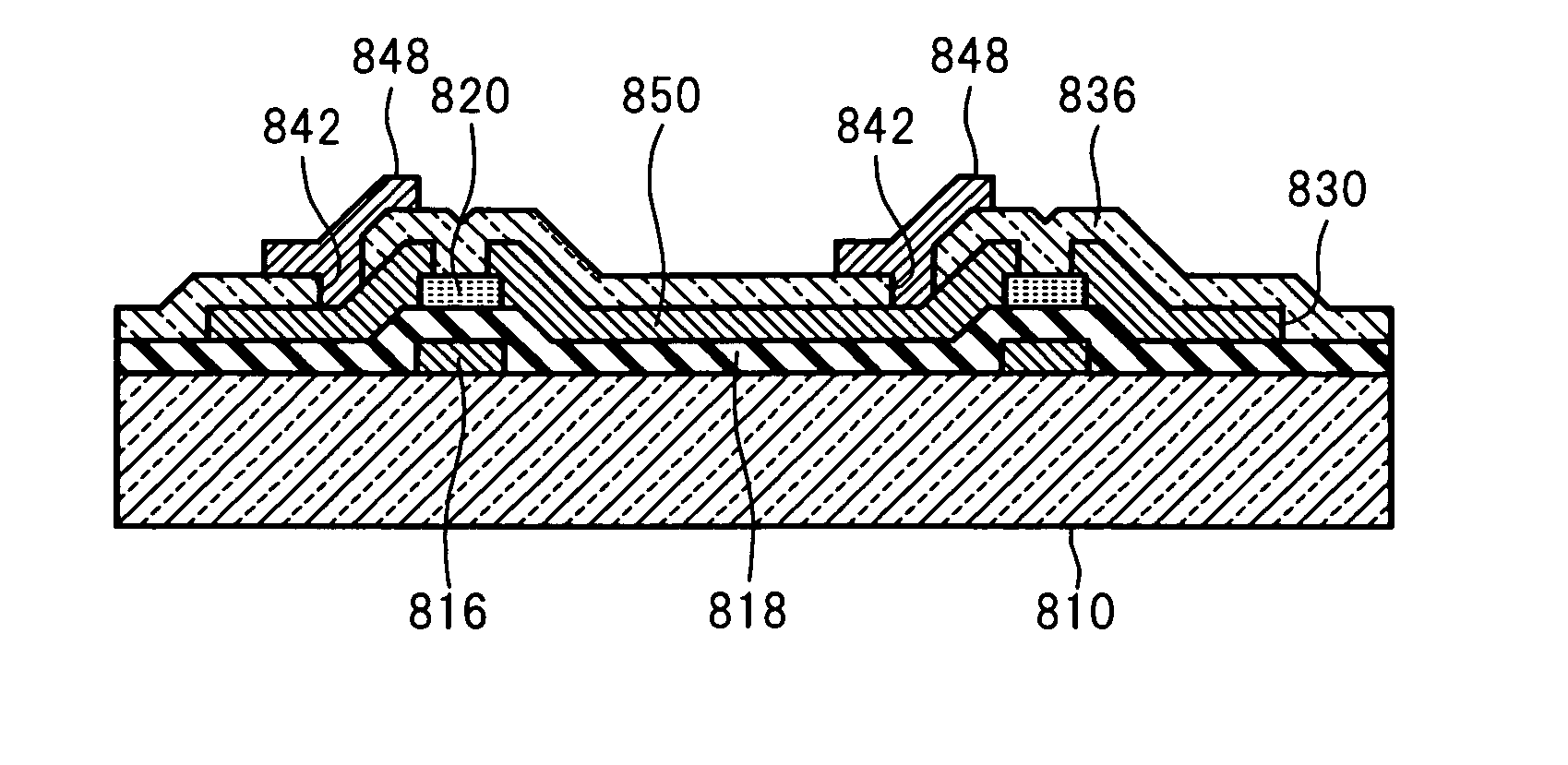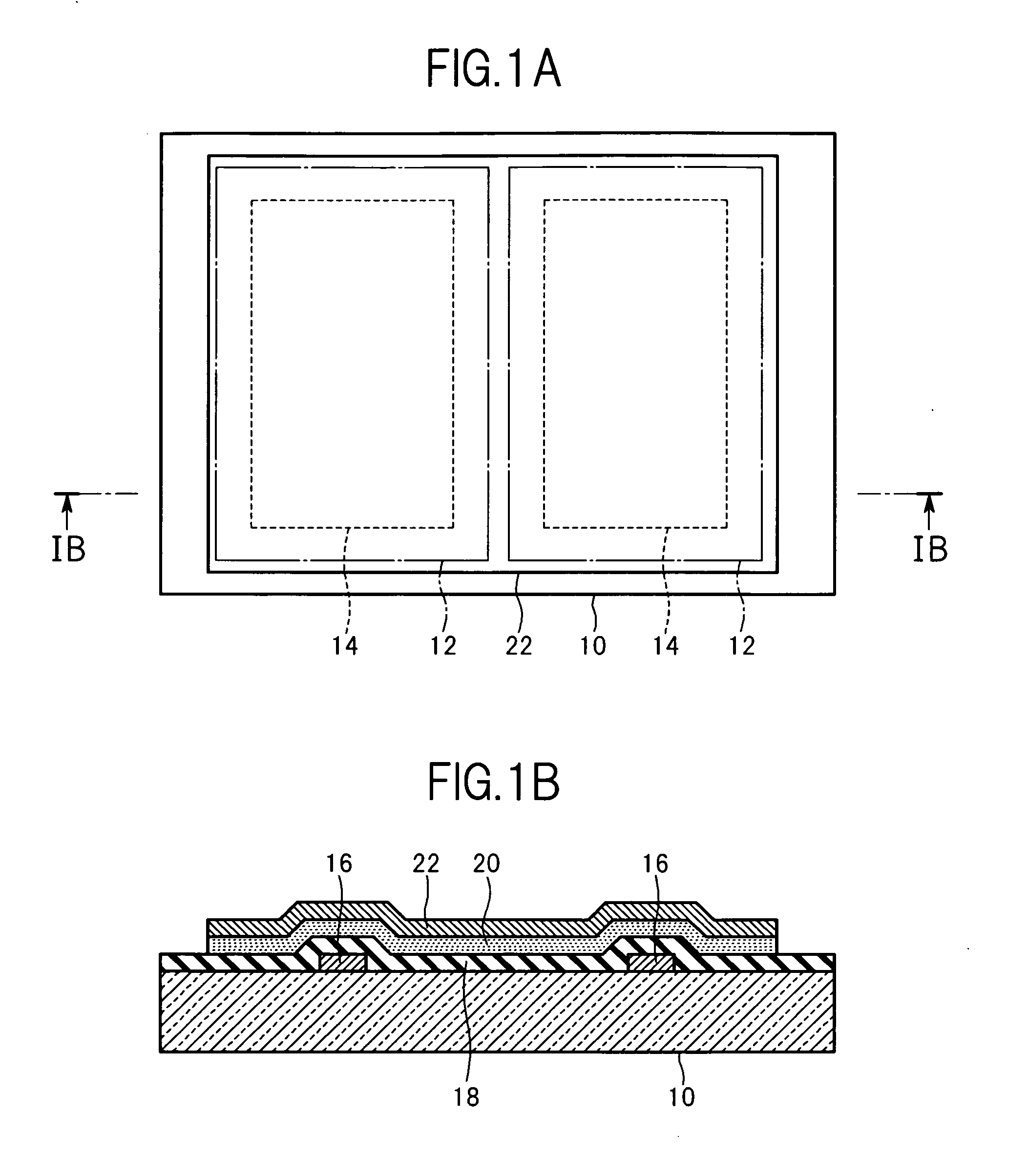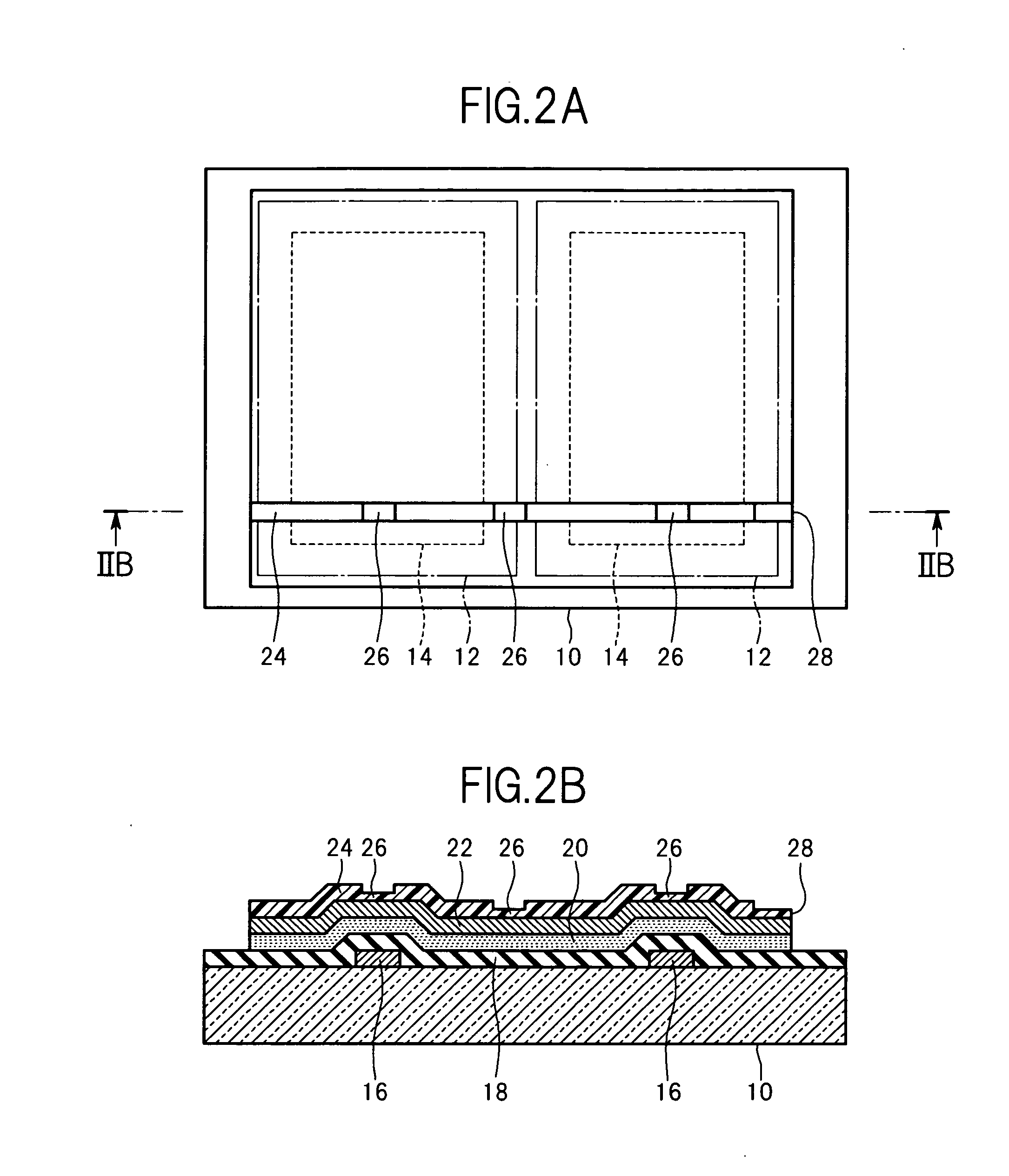Display device and manufacturing method thereof
a technology of a display device and a manufacturing method, applied in the field of display devices, can solve the problem of requiring a wiring removal process and achieve the effect of preventing the influence of exposed wiring
- Summary
- Abstract
- Description
- Claims
- Application Information
AI Technical Summary
Benefits of technology
Problems solved by technology
Method used
Image
Examples
first embodiment
[0069]FIG. 1A to FIG. 7B illustrate a manufacturing method for a display device according to a first embodiment of the present invention.
[0070]In this embodiment, as illustrated in FIGS. 1A and 1B, a substrate 10 is prepared. FIG. 1B is a cross-sectional view taken along the line IB-IB of a structure illustrated in FIG. 1A. The substrate 10 is made of glass, for example, and is often required to have optical transparency. The substrate 10 is a mother substrate for manufacturing a plurality of display devices integrally. One substrate 10 has a plurality of product areas 12 (areas corresponding to display device components), and each of the product areas 12 has an effective display area 14 (image display area).
[0071]Taking a liquid crystal display panel as an example of the display device, the substrate 10 is a thin film transistor (TFT) substrate (or array substrate) including thin-film field-effect transistors, pixel electrodes, wirings, and the like. It should be noted that the liq...
second embodiment
[0093]FIG. 11A to FIG. 13B illustrate a manufacturing method for a display device according to a second embodiment of the present invention. In this embodiment, the same processes as in the first embodiment are performed halfway. Specifically, the processes of the first embodiment described with reference to FIG. 1A to FIG. 6B (up to the process of forming the passivation film 36 over the wiring 30 after the patterning of the wiring 30) are performed. Then, the passivation film 36 is etched before the process of cutting the substrate 10 (see FIGS. 7A and 7B).
[0094]As illustrated in FIGS. 11A and 11B, an etching resist 228 is formed for etching the passivation film 36. FIG. 11B is a cross-sectional view taken along the line XIB-XIB of the structure illustrated in FIG. 11A. The etching resist 228 has first openings 38 and second openings 40, from which the passivation film 36 is exposed. The first openings 38 are formed above the wiring 30 corresponding to portions that need to be ele...
third embodiment
[0099]FIG. 14 to FIG. 24B illustrate a manufacturing method for a display device according to a third embodiment of the present invention. The display device to be manufactured in this embodiment is a liquid crystal display device using two oxide semiconductor layers, such as an in-plane switching (IPS) liquid crystal display device.
[0100]As illustrated in FIG. 14, a first oxide conductive film 552 is formed on a substrate 510. The first oxide conductive film 552 is formed of an oxide semiconductor having conductivity (such as indium tin oxide or indium zinc oxide). The first oxide conductive film 552 is a transparent conductive film. On the first oxide conductive film 552, a first metallic layer 522 is formed.
[0101]FIGS. 15A and 15B are cross-sectional views taken along different lines in the same process. There are similar relationships between FIGS. 16A and 16B, FIGS. 17A and 17B, FIGS. 18A and 18B, FIGS. 21A and 21B, FIGS. 22A and 22B, and FIGS. 23A and 23B, respectively.
[0102]A...
PUM
 Login to View More
Login to View More Abstract
Description
Claims
Application Information
 Login to View More
Login to View More - R&D
- Intellectual Property
- Life Sciences
- Materials
- Tech Scout
- Unparalleled Data Quality
- Higher Quality Content
- 60% Fewer Hallucinations
Browse by: Latest US Patents, China's latest patents, Technical Efficacy Thesaurus, Application Domain, Technology Topic, Popular Technical Reports.
© 2025 PatSnap. All rights reserved.Legal|Privacy policy|Modern Slavery Act Transparency Statement|Sitemap|About US| Contact US: help@patsnap.com



